
At one of the largest agricultural events in the country, the Agro Ukraine Summit in Kyiv, the AgriAcademy.org platform was presented, providing free access to professional education for farmers from all over Ukraine. The initiative was presented at three industry conferences during the summit and attracted considerable interest from industry associations, producers, and processors, according to SEEDS.
“Today’s agribusiness requires quick decisions, relevant practical knowledge, and continuous professional development. That is why I would like to draw your attention to one of the most promising initiatives in the field of professional education for agribusiness – AgriAcademy.org. This is a unique educational platform that brings together the agribusiness community of Ukraine and provides modern, practical knowledge in the form of free online courses developed by the best experts from Ukraine and around the world.
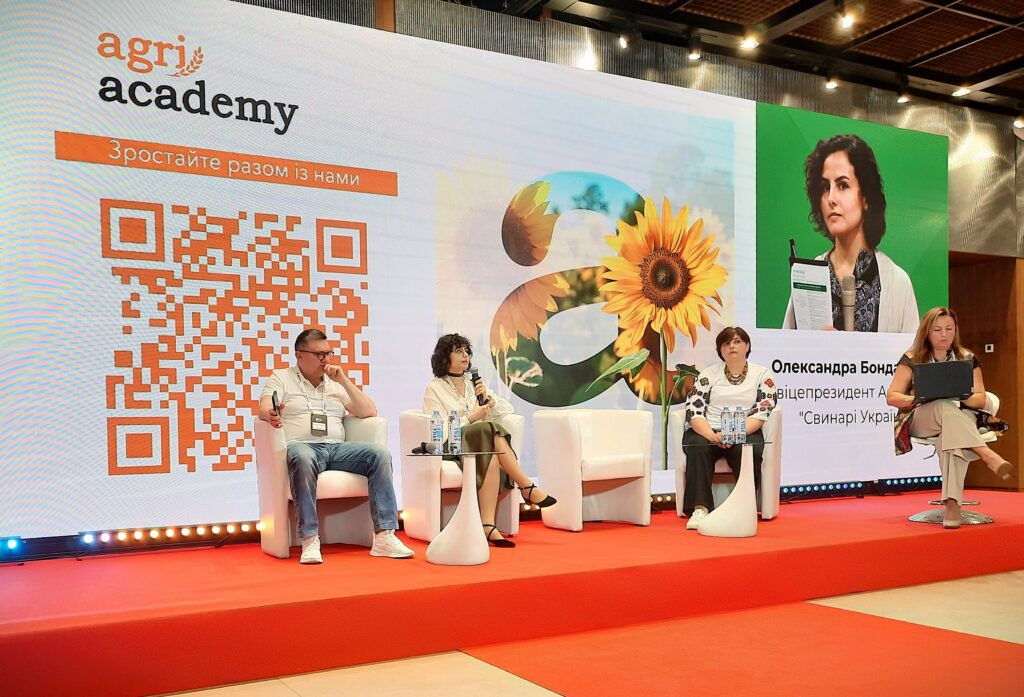
It is designed for professionals in the agricultural sector: business owners, managers, farmers, agronomists, veterinarians, and anyone interested in practical knowledge and increasing profitability,” emphasized Rodion Rybchynsky, Chairman of the Ukrainian Flour Millers Association and UN FAO grain market expert, during a panel discussion on “The transformation of grain processing in the context of European integration.”
“The platform already offers 23 free online courses in Ukrainian, developed with the support of the EBRD. Each course has been created in collaboration with leading Ukrainian and international experts, with a focus on practical benefits for business,” said Rodion Rybchynskyi.
AgriAcademy was also presented at the conferences ‘Futurology of Grain Storage’ and ‘Effective Livestock and Poultry Farming,’ which allowed it to reach a wide audience. Each conference was attended by 70 to 150 participants, and a QR code with direct access to AgriAcademy was displayed on the screen every 15 minutes in the Summit exhibition area.
Among the speakers who presented the platform was Oleksandra Bondarska, Vice President of the Ukrainian Pig Breeders Association.
“AgriAcademy offers over 300 hours of training. After completing the course, participants receive an official certificate. It is a tool for the real development of agricultural entrepreneurs,” said Oleksandra Bondarska, speaking to an audience of livestock and poultry farmers.

“The platform offers a course entitled African swine fever – everything a business needs to know. The course covers all aspects of African swine fever (ASF) that need to be known, from risk factors and main routes of transmission to effective prevention and response measures. Participants will learn how the disease develops on an infected farm (experience of affected enterprises), how to reduce risks for their farm, and protocols for action in case of suspicion and after the outbreak has been eliminated,” the expert added.
Oleksandra also advised producers to take the Basics of Pig Health course available on the platform. The course covers issues of animal health support and control throughout the entire production cycle in terms of technological and age groups of pigs and types of diseases, and also includes information on quarantine and the development of herd health monitoring and vaccination programs.
The AgriAcademy platform was also presented by Sviatoslav Tkachenko, member of the board of the Ukrainian Elevator Association, during the conference “Futurology of Grain Storage” to an audience of grain producers, processors, and exporters.
“AgriAcademy offers practical courses in agronomy, irrigation, processing, technology, berry growing, animal husbandry, crop production, veterinary medicine, and ecology:https://agriacademy.org/courses-catalog/
This spring, two courses from specialists at the Astarta-Kyiv agro-industrial holding have been added: Sunflower. Growing Technology and Sunflower. Biological Characteristics of the Crop,” said Sviatoslav Tkachenko.
You can join the free training now at AgriAcademy.org
The courses are designed with the practical needs of the industry in mind and are taught in Ukrainian, ensuring convenience, accessibility, and high learning efficiency. Grow your business with AgriAcademy, your reliable partner in innovation and efficiency improvement!
Source: https://www.seeds.org.ua/
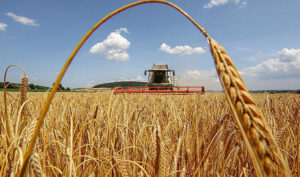
The Ministry of Agrarian Policy and Food and the World Bank plan to expand cooperation in the development of Ukraine’s agribusiness sector.
The agreement was reached following talks between Minister of Agrarian Policy and Food Vitaliy Koval and World Bank Managing Director for Operations Anna Bjerde, the ministry’s press service reported.
According to the report, the parties agreed to expand cooperation in three areas: preparing analytical data for decision-making in the agribusiness sector; institutional support for the Ministry of Agrarian Policy with a focus on integration into EU policies and standards; implementation of programs for more than 200,000 small and medium-sized farmers as the basis for Ukraine’s agricultural sustainability.
“Our goal is not only to preserve but also to transform Ukrainian agriculture in line with EU standards and opportunities. And the advocacy platform provided today by the World Bank team in Vienna is actually the key to faster and more successful European integration,” Koval emphasized.
In addition, during the meeting with World Bank representatives led by Regional Director for Sustainable Development in Europe and Central Asia Sameh Wahba, the possibility of deepening cooperation in the field of irrigation was discussed. In particular, they talked about restarting the irrigation system development plan to get help in more regions of Ukraine.
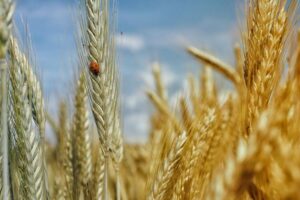
Companies from the United Arab Emirates (UAE) are ready to invest in the production of processed foods, grain transshipment and port development, the Ministry of Agrarian Policy and Food has reported.
According to the ministry, during a working visit to Saudi Arabia, Minister of Agrarian Policy and Food Vitaliy Koval and a government delegation headed by First Deputy Prime Minister and Minister of Economy Yulia Svyrydenko met with more than 20 leading UAE companies. Among them are port operators, investment, agricultural and trading companies interested in import and export cooperation with Ukraine.
“Ukraine and the United Arab Emirates have opened a new page in economic partnership. Among the UAE companies there are those that are ready to enter the Ukrainian market. In particular, to invest in the production of processed products, such as oilseeds, rapeseed, soybeans. As well as grain transshipment and port infrastructure development,” Koval said.
The Minister emphasized that the Ukrainian agricultural sector is already actively working with the UAE. In 2024, we exported more than $197 million worth of agricultural products. Among the most popular products were fats and oils of animal or vegetable origin, meat and edible offal, cereals, vinegar, etc.
As reported, the Comprehensive Economic Partnership Agreement between Ukraine and the UAE was signed in Abu Dhabi on February 17. It provides for free trade between the two countries and liberalization of access to the UAE market for Ukrainian agricultural products, including duty-free supplies of beef, lamb, dairy and processed foods. In addition, the Saudi side has expressed interest in joint development of beef cattle breeding and production of organic products.
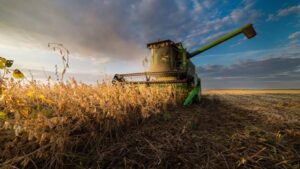
Borrowings from clients in the agricultural sector account for about 40% of the loan portfolio of the state-owned Ukrgasbank (Kyiv), said Mykola Alfyorov, deputy director of the small and medium business department of the financial institution.
“In general, 40% of our loan portfolio is made up of clients from the agricultural sector. This area will always be a priority, despite all the risks, as evidenced by the statistics of all banks,” he said at the Agro Finance Summit in Kyiv on Thursday.
According to him, in 2024 Ukrgasbank increased lending to the agricultural sector in the investment direction: it accounted for 50% of all loans. In total, since the beginning of the full-scale war, the bank has issued loans for almost UAH 10 billion.
“In the first year of the war, it was a task aimed at replenishing working capital and providing it to farmers so that they could sow and harvest on time. Already in 2023, we saw a dynamic increase in the investment interest of the agricultural sector, and in 2024 it was a real growth,” said Alfiorov.
Among the most popular financial products among agrarians, he named the state program “5-7-9%” in combination with international programs.
The Deputy Director of the Department also pointed out that Ukrgasbank actively provides financing up to UAH 8 million using guarantee mechanisms from farmers, but this amount can be doubled to UAH 16 million under a portfolio guarantee or a guarantee of an international organization.
According to the National Bank of Ukraine, as of November 1, 2024, Ukrgasbank ranked 5th (UAH 136.18 billion) among 62 banks operating in the country in terms of total assets. The net profit of the financial institution for 10 months of the year amounted to UAH 4.84 billion, while for the same period in 2023 it was UAH 3.36 billion.

On January 1, the Law “On Agricultural Notes” came into force in Ukraine, which provides for the establishment of a separate Register of Agricultural Notes.
It is expected that the register will contain information on the issuance, content and change of details of agrarian notes, termination and encumbrance of agrarian notes, and the commencement of enforcement of obligations under agrarian notes on the basis of a special extract from the register.
The Registry, in turn, will ensure transparency, efficiency and convenience of operations with agricultural notes by automating the processes of forming the details of agricultural notes, making changes, issuing and terminating them. Automated work will simplify the interaction between agricultural producers, creditors, and investors.
In addition, the digitalization of processes in the Registry will reduce transaction costs associated with the issuance and termination of agricultural notes, making the instrument cheap and easy to use.
Oleksiy Yudin, Chairman of the Board of the National Depository of Ukraine (NDU), previously expressed confidence that the project would be an important step in building the digital infrastructure of the agricultural sector, help attract additional investment and ensure sustainable economic growth.
“This project is an important step for the digitalization of the capital market and the agricultural sector in Ukraine. The development of the Agricultural Notes Register will not only help strengthen our country’s position in the global agricultural market, but also create new opportunities for investors,” said Ruslan Magomedov, Chairman of the National Securities and Stock Market Commission.
The NSSM added that this decision is an important infrastructure element and a central component of the entire ecosystem of agricultural notes, without which the full implementation of the new instrument in the market is impossible.
As reported, in October 2024, the International Finance Corporation (IFC, a member of the World Bank Group) and the National Depository of Ukraine signed a grant agreement under which NDU will receive up to $300 thousand to create and implement an innovative Register of Agricultural Notes.
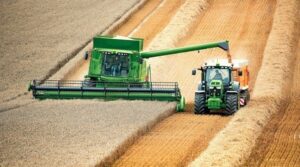
In 2024, the Ukrainian agricultural sector set a second historical record of $24.5 billion in foreign exchange earnings from the export of agricultural products, Minister of Agrarian Policy and Food Vitaliy Koval said in an interview with Ukrainian Radio.
“To summarize the 24th year, it brought us the second best result in terms of foreign exchange earnings from exports. We set the second historical record – the country received $24.5 billion from the export of agricultural products. This is a good indicator,” he said.
The Minister recalled that the best year in terms of foreign exchange earnings from agricultural exports was 2021, when the agricultural sector earned $27.7 billion due to a good harvest.
Koval noted that compared to 2023, the agricultural sector’s foreign exchange earnings from exports increased by more than $2 billion.
“I think 2024 was a year of resilience for the entire agricultural sector. Ukrainian agrarians withstood, persevered and proved to be the best. The fact that we harvested a good crop, 75 million tons of grains and oilseeds, despite the mined land and hostilities is a good result, given that the year was dry and we had to admit the loss of yields. But in general, Ukraine has not only resisted, but also increased its agricultural power,” the Minister of Agrarian Policy summarized.